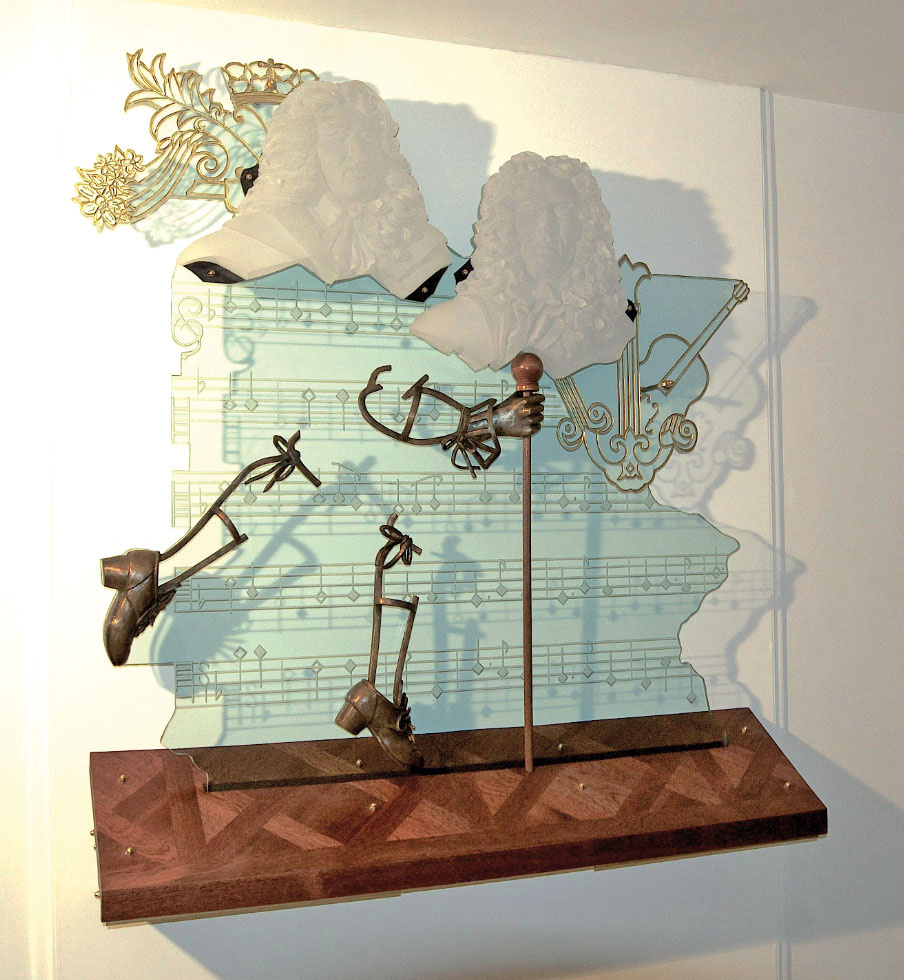Dance at Versailles
Materials Sandblasted glass, cast glass, bronze, wood and brass
Collection Catherine and Thierry Allix, Verrières le Buisson, France
Beginning in the mid-16th century almost 100 years before the birth of Louis XIV the dance was an important part of the education of nobility. However, during his reign it transformed from court dancing to the performance of story pieces and then to classical dancing or ballet. In 1653 at the age of 14 Louis met another dancer Jean Baptiste Lully, seven years his senior, while performing in “Ballet de la Nuit”. It was in this piece where Louis appears at the end as the rising sun where he acquired his title of the Sun King.
Lully, born Giovanni Battista Lulli in Italy, became fast friends with the king and was appointed royal composer due to his education under the tutelage of several accomplished musicians during his previous service with Mademoiselle de Montpensier. He was a highly skilled guitarist, violinist, and dancer.
Beginning in the mid-16th century almost 100 years before the birth of Louis XIV the dance was an important part of the education of nobility. However, during his reign it transformed from court dancing to the performance of story pieces and then to classical dancing or ballet. In 1653 at the age of 14 Louis met another dancer Jean Baptiste Lully, seven years his senior, while performing in “Ballet de la Nuit”. It was in this piece where Louis appears at the end as the rising sun where he acquired his title of the Sun King.
Lully, born Giovanni Battista Lulli in Italy, became fast friends with the king and was appointed royal composer due to his education under the tutelage of several accomplished musicians during his previous service with Mademoiselle de Montpensier. He was a highly skilled guitarist, violinist, and dancer.
In 1661 Louis XIV took the reins of government and the true dimension of his personality began to make its mark. Construction at the chateau at Versailles began in earnest enlarging it in stages from the hunting lodge built by his father Louis XIII. The sculpture incorporates several details from the palace. The famous parquet floor becomes the base and behind the king is an element of design from the fence that surrounds the grounds. Behind the composer/choreographer is a design that is taken from a bas -relief in the music room.
